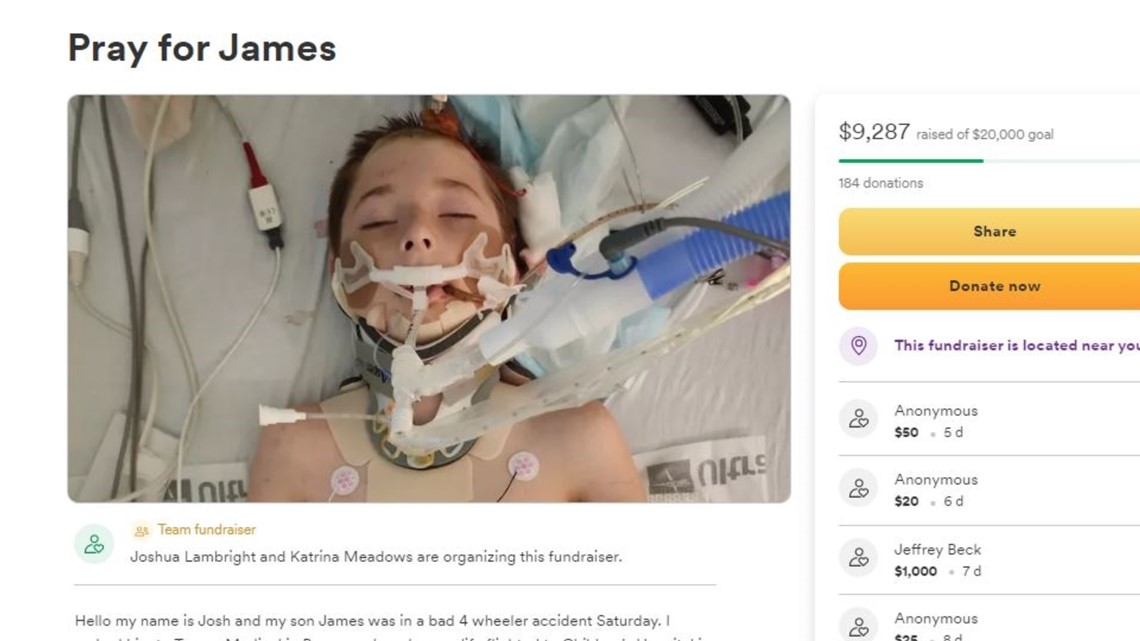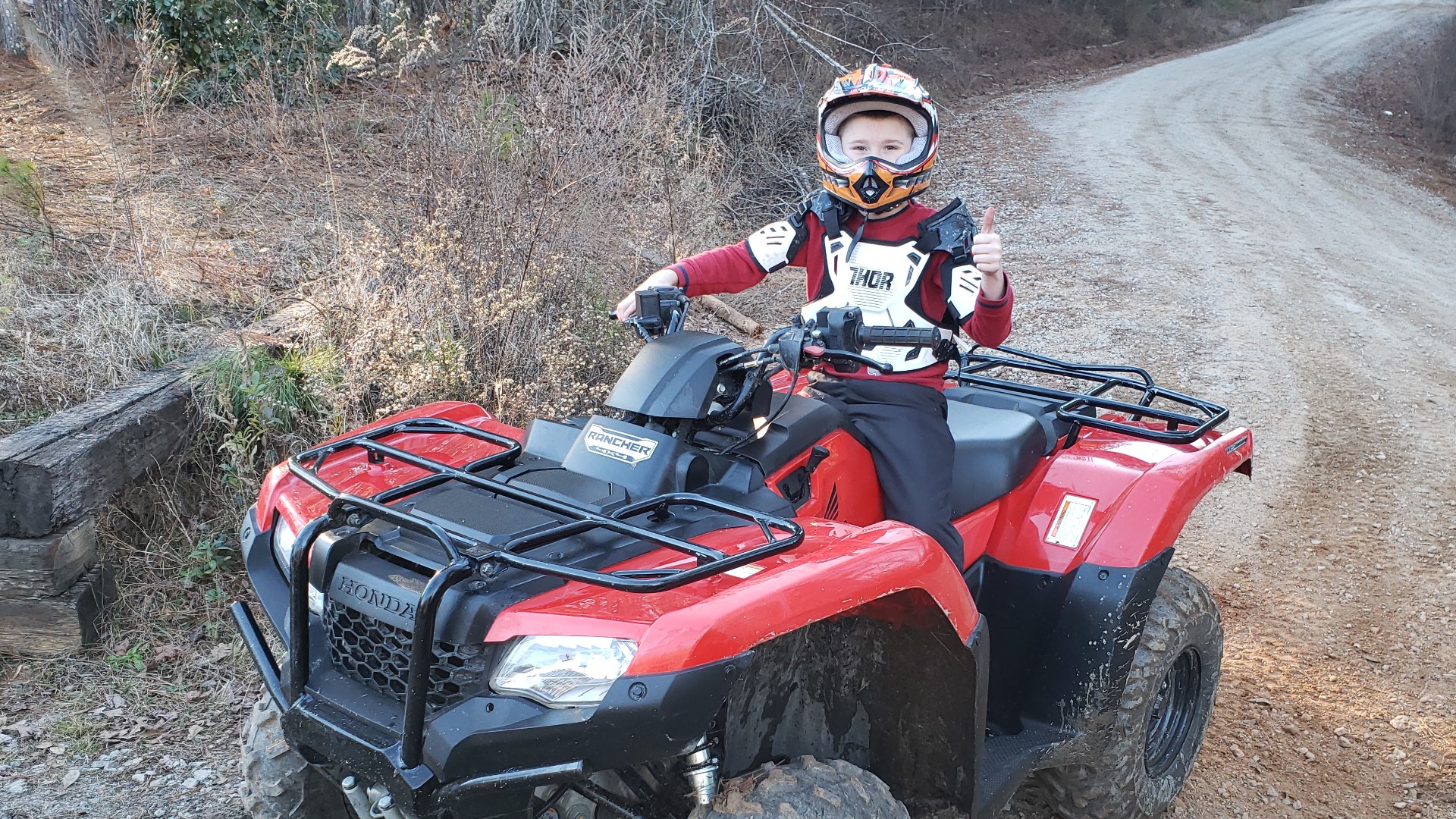ATLANTA — The last day of school is only days away for kids across the metro, but as summer starts, doctors are raising the alarm about a concerning trend of kids getting hurt on ATVs.
"We definitely see ATV injuries increase when the weather gets warm and especially during summer when children have a lot of free time," Dr. Maneesha Agarwal, who works in the emergency room at Children's Healthcare of Atlanta, said. "It's just heartbreaking, as you can imagine."
11-year-old James Lambright is currently recovering at Children's after an ATV accident in late April.
"He loves outdoors," his dad Josh told 11Alive. "We live in the country so he loves riding."
James and his friend Dustin were riding near the family's home in Carrollton, Georgia, when James flipped his four-wheeler, his dad explained.
"His eyes were open, but he wasn't there," Josh said. "And that's when I knew it was bad. I had no idea it was as bad as it turned out to be."
James was airlifted to Children's, spending seven hours in surgery. The waiting was excruciating for his parents, Josh shared.
"Me and his mom came up [to Children's] and didn't know if he was going to make it," Josh said. "That's not something that anybody ever wants to have to experience."
While still in the hospital, James is now recovering. Yet, U.S. Consumer Product Safety Commission data from 1982-2015 shows that ATV crashes have killed more than 3,000 children younger than 16 years of age and required emergency department visits for nearly a million more. It's estimated around four kids are seen in an emergency department every hour for an ATV-related injury in the United States.
"Some of the dangerous things that we see children do on these machines include riding with passengers, riding unhelmeted, riding without supervision, riding without protective gear," Dr. Agarwal said.
James ultimately suffered 22 broken bones, a punctured lung, and a punctured liver, his dad said. His parents are now hoping to spare other families the pain, emphasizing the importance of supervision and protective gear.
"Put your helmets on. Put your chest plates on," Josh said. "He's got the boots, the pants...he didn't have a bit of it on."
To help the Lambright family with expenses, visit the GoFundMe here.


The AAP urges the following safety rules for ATV riding:
Wear a helmet. Riders should always wear motorcycle-style helmets that are approved by the Department of Transportation. Wearing a helmet may greatly prevent or reduce the severity of a head injury in a crash.
Don't ride with or as a passenger. Most ATVs are designed to carry only one person: the driver. Passengers can make ATVs less stable and difficult to control.
Stay off public roads. ATVs are not designed for roadway use like cars and trucks. They don't have the common safety equipment that all cars and trucks do. ATVs have knobby treaded, low pressure tires that can unpredictably grab public roadway surfaces and lead to loss of control and rollover.
Don't cross public roads. The exception is if it's permitted by law and supervised by someone who is at least 18 years old.
Only use an ATV that is the right size for the driver. Adult-sized ATVs can weigh over 800 lbs. and reach speeds over 70 mph. Their size and speed make them too dangerous for kids to drive. More than 90% of deaths and injuries among ATV riders younger than 16 have occurred when they were on adult-size vehicles.
Never allow riding at night. This means no riding after dusk and until dawn. Flags, reflectors and lights should always be used to make vehicles more visible.
Do not drive ATVs while under the influence. Alcohol, drugs and even some prescription or over-the-counter medicines can physically or mentally impair your driving skills and abilities. This sets a good example for your children too.

